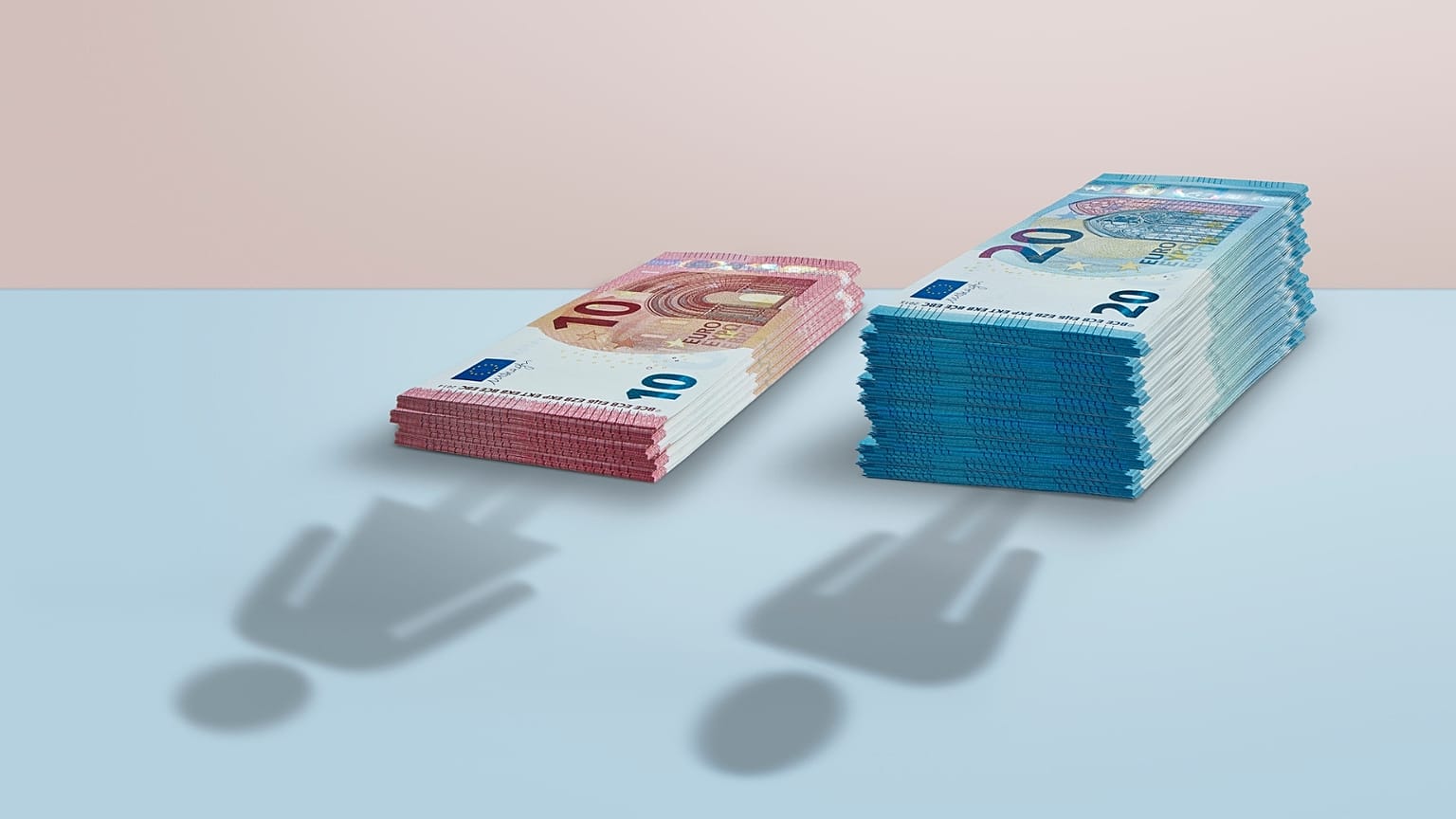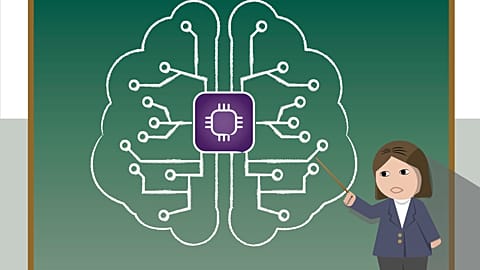The gender pay gap is much more than equal pay for equal work. Women in Europe face major inequalities in access to work, progression, and rewards.
The gender pay gap is still very much evident in Europe. Several indicators exhibit the inequality between women and men in many arenas, but economic life is one of the key areas affecting women the most.
Despite some improvements in Europe, women still suffer from gender gaps when it comes to wages, labour force participation, employment and hierarchical positions in the workplace.
Euronews Next crunches the data in these main indicators to give a fuller picture of the current gender divide.
How much more do men earn than women?
Gender inequality in wages has increasingly been debated in recent years.
Unadjusted gender pay gap is a significant indicator, showing the difference between the average gross hourly earnings of men and women, expressed as a percentage of the average gross hourly earnings of men.
It does not take into account education, age, hours worked or type of job.
This basically reveals how much less women earn than men. In 2022, the gender gap was 12.7 per cent in the EU. In other words, women earned 12.7 per cent on average less per hour than men.
This shows that women on average earn €87.3 for every €100 earned by men. In short, women would need to work an extra 1.5 months to make up the difference.
The gender pay gap considerably varied in the EU and the European Free Trade Association (EFTA) bloc. In 2022, it was over 17 per cent in several countries.
Estonia had the highest gender pay gap at 21.3 per cent, followed by Austria (18.4 per cent), Switzerland and Czechia (both 17.9 per cent).
Luxembourg (-0.7 per cent) was the only country with a negative figure, meaning women earned slightly more than men.
Apart from Luxembourg, Italy, Romania and Belgium had the lowest gender pay gap at less than five per cent.
Among the EU’s "Big Four," Germany (17.7 per cent) and France (13.9 per cent) had higher gaps than the EU average.
Is the gender pay gap falling in Europe?
One of the aims of the European Commission is to decrease the gender pay gap in the bloc. Has there been any improvement in that direction? Progress is steady but it is slow.
Between 2012 and 2022, the gender pay gap fell by 3.7 percentage points (pp) in the EU, down from 16.4 per cent to 12.7 per cent.
Pay gap rose in six countries
In six countries, namely Slovenia, Latvia, Poland, Malta, Switzerland and Lithuania, the gender pay gap increased, ranging from 0.1 pp to 3.7 pp.
Significant improvement in Spain, Estonia and Iceland
Spain recorded the highest improvement in the gender pay gap at a 10 pp decline in this period, followed by Estonia (8.6 pp), Iceland (8.4 pp) and Luxembourg (7.6 pp).
Germany and the UK also recorded considerable fall by 5 pp and 4.7 pp respectively.
Is the gender pay gap higher in the private sector?
Yes, it is.
In 2022, the gender gap was higher in the private sector than the public in 21 out of 24 European countries.
According to EU data agency Eurostat, this might be due to the fact that pay in the public sector is mostly determined by transparent wage grids that apply equally to men and women in the EU.
The pay gap was higher in the public sector only in Portugal, Slovenia and Finland.
Cyprus recorded (-0.2 per cent) a negative gap in the public sector, indicating women were better paid than men.
Cyprus also recorded the highest difference between the public and private at 19.7 pp.
This difference was above 10 pp in five countries, suggesting gender inequality in wages was strong in many countries.
Women earn 12.7 per cent less than men in German private sector
Czechia had the highest gender pay gap in the private sector at 20.5 per cent, closely followed by Germany (19.9 per cent). This shows that women on average earn €80 for every €100 earned by men in the German private sector.
Why do women earn less?
The reasons behind the gender pay gap are not simple. It is more than the issue of equal pay for equal work.
"It comprehends a large number of inequalities women face in access to work, progression and rewards," the European Commission underlines.
According to the Commission, the main reasons are:
- Sectoral segregation: Around 24 per cent of the gender pay gap is related to the overrepresentation of women in relatively low-paying sectors, such as care, health and education.
In 2022, 28 per cent of women in the EU worked part-time compared to 8 per cent of men.
Pay discrimination: Women earn less than men for doing equal work or work of equal value in some cases.
Unequal share of unpaid work: Women have more work hours per week than men but they spend more hours on unpaid work, a fact that might also affect their career choices. They are much more likely to stop working to take care of children and relatives. That is the reason why the EU promotes equal sharing of parental leaves.
The glass ceiling: The position in the hierarchy obviously influences the level of pay. For example, the profession with the largest differences in hourly earnings in the EU were managers: 23 per cent lower earnings for women than for men.
Besides being paid higher than women, men generally occupy higher positions than women. In 2021, women accounted for only 35 per cent of managers in the EU.
As the chart above shows, the share of women in this position was not over 50 per cent in any EU country. Latvia (46 per cent), Poland and Sweden (both 43 per cent) had the largest shares whereas Cyprus (21 per cent), Luxembourg (22 per cent) and the Netherlands (26 per cent) recorded the smallest proportions.
Women are more educated but they are less employed
Many factors still need to be taken into consideration in understanding the gender pay gap.
In 2022, women with tertiary education (37.1 per cent), which includes universities, colleges, technical training, in the EU was clearly higher than men (31.4 per cent).
The share of women with tertiary education was higher than the corresponding share of men in almost all EU countries, except Germany and Austria.
However, the employment rate of women (83.6) was lower than men (88.9 per cent) in the EU. These figures obviously demonstrate that women are less employed although they are more educated.
Men are employed more in all EU countries
Among 15-64 years of age, the EU employment rate for men was 74.7 per cent in 2023, exceeding that of women (64.9 percent) by 9.8 percentage points.
The employment rate of men was higher than that of women in all EU countries, ranging from 0.3 pp in Lithuania to 19.1 pp in Greece.
Turkey, a candidate country, was an outlier at 34.6 pp.
Improvement in labour force participation but the gap still is high
Labour force participation rate of women was also lower than that of men in all EU countries. In 2022, this difference was 9.9 pp in the EU according to the OECD data.
This figure was 16.6 pp in 2002.
While almost all countries, except Romania, experienced improvements to narrow this gap in the last two decades, the gender gap in labour force participation rate was still above 10 pp in eight EU countries including Romania, Italy and Greece.
Spain, Malta and Luxembourg recorded considerable improvements in narrowing the gender gap in labour force participation in the last two decades.


















